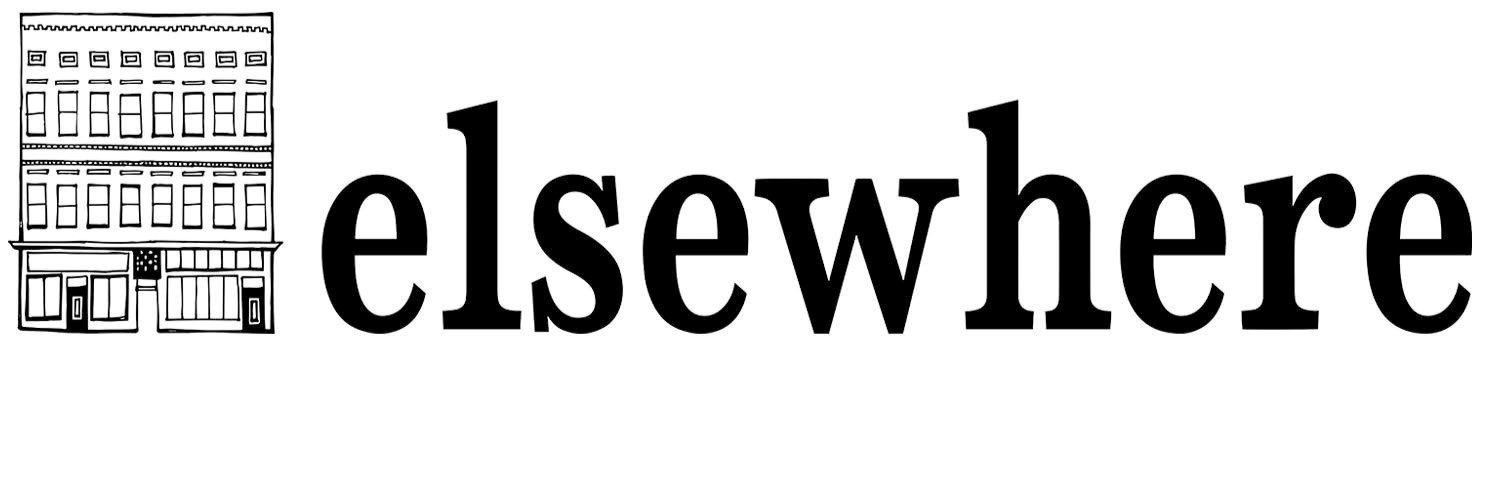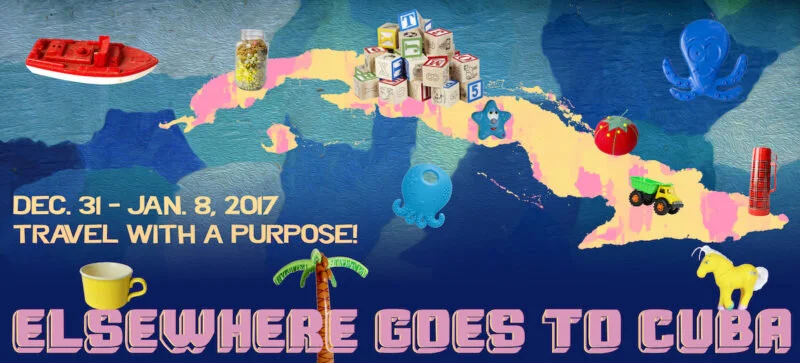Elsewhere Goes To Cuba
Overview
Elsewhere Goes To Cuba
December 31 - January 8, 2017
The Elsewhere brigade traveled to Cuba over the winter holidays with NEEM, a non-profit dedicated to the Cuban agroecological organipónico model.This special travel group explored Cuba’s experimental styles in art and agriculture by meeting with farmers, artists, and cultural leaders for in-depth access to studios, agricultural cooperatives, and arts institutions.
HIGHLIGHTS :
Chocó Studio | Visit with state treasure and sustainable material artist Eduardo Roca Salazar.
Arte de Cuba | Learn about the founders who smuggled paint, canvas, and art supplies by boat to support Cuban artists.
Las Terrazas, Pinar del Rio | Cuba’s largest art colony and commune.
Idallios | Private organipónico farm to explore art, culture, and food.
Centro De Arte Contemporáneo Wilfredo Lam | Contemporary art center honoring Lam, who shared a studio with Picasso.
Instituto Superior de Arte | Architectural feats that came out of the revolution and inspired Utopia Posible by artist Felipe Dulzaides, the documentary film Unfinished Spaces, opera entitled Revolution of Forms, and podcast 99% Invisible.
Ediciones Vigía| Studio visit to independent publishing collective of handmade books.
Salvador Gonzáles Escalona and other Cuban muralists, Callejón de Hamel, 1990-present. Image by George Scheer, 2017.
Accomodations
The group was based out of Havana. Stays included 8 nights / 9 days in double rooms at NEEM’s favorite Casa Particulares (bed & breakfast style home stays).
The Brigade
Clint Easthood | Videographer + Artist
Emily Ensminger | Elsewhere Program Director
Jeff Ensminger | NEEM Founder + Director
Ivan Feign | Photographer + Tech Wiz
Philip Freelon | NMAAHC Architect, President of The Freelon Group
Nneenna Freelon | 6-time Grammy nominated jazz singer
Bob Powell | Architectural Engineer, Associate Professor at NC A&T University
Mildred Powell | Organization Administrator, Fund for Democratic Communities
Kat Phillips | Phillips Foundation Trustee
George Scheer | Elsewhere Co-Founder + Executive Director
Preparations
Image courtesy of Philip Freelon, 2017.
IMPORTANT THINGS TO KEEP IN MIND
Download Cuba phone apps for offline use. Consider:
Galileo, a map helpful for getting around.
Jibbigo, for verbal translation
World Lens, for sign translation.
Being able to stay connected in Cuba is not easy. If you need to stay in touch regularly with people in the US look into getting a prepaid phone that can be used on the island. To make occasional calls or check emails, you will need to walk to a hotel, buy a card, and use their services (like internet cafés with phone service/cabinas).
Be AT THE AIRPORT NO LATER THAN 3 hours prior to departure. Flights to Havana are notoriously chaotic, and at this historic moment especially so.
PACKLIST
In Cuba, you are allowed 66 lbs (of which 22 can be medication). You can bring your laptop, ipad or any device of your choice. Be prepared to fill out paperwork to check in when you arrive in Cuba (standard procedure).
Bring comfortable shoes and clothes
Swimsuit + towel
Toiletries (soap, shampoo, conditioner, etc.)
Toilet paper, wipes, and hand sanitizer (public bathrooms do not have these)
Imodium, Pepto, pain medication (In case of stomach issues or pain issues)
EXPENSES/MONEY:TAXIS
Official taxis range between $7 - $12 within the Havana proper area.
MONEY
Cash is the only way to pay for stuff in Cuba (at least for now!). When you change dollars for CUC (Cuban Convertible Pesos) the government takes a cut, which ranges about 12%. You can exchange dollars at the airport (advised you do once arrived). Once in the city, hotels, banks and places called Cadecas are all good options for exchanging currency.
RECOMMENDED READING
Image courtesy of Philip Freelon, 2017.










